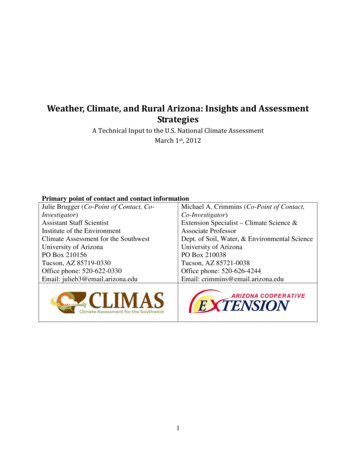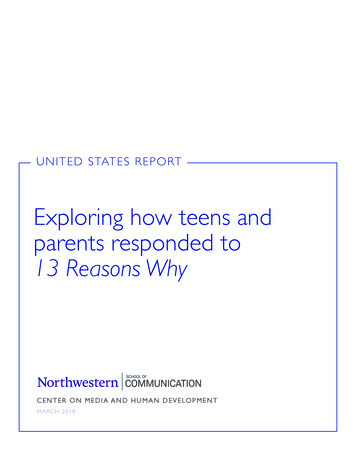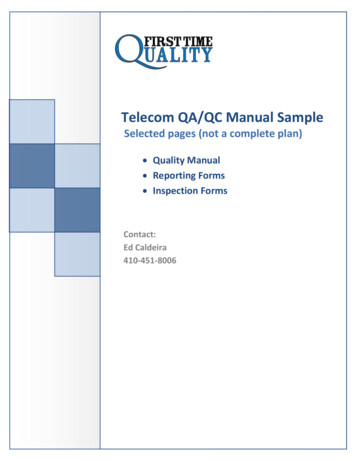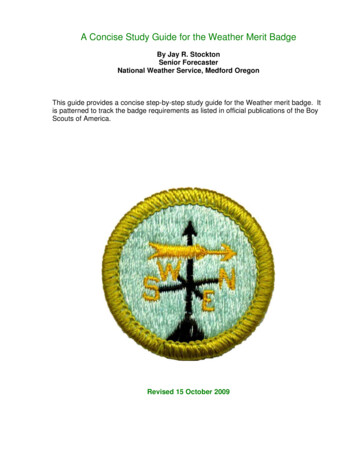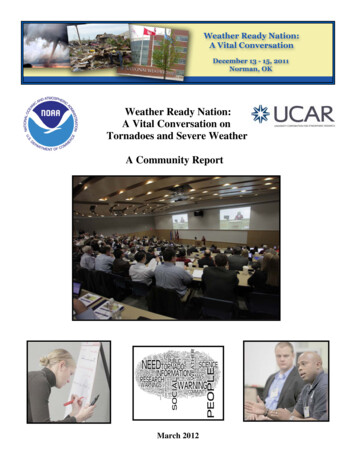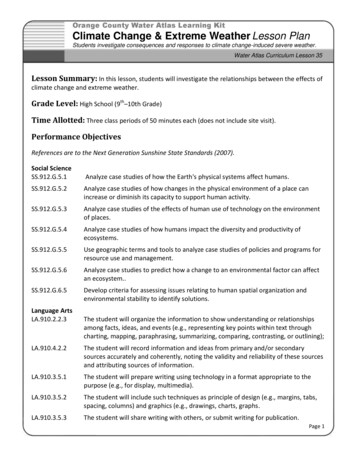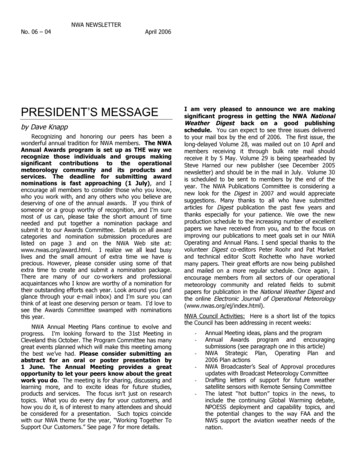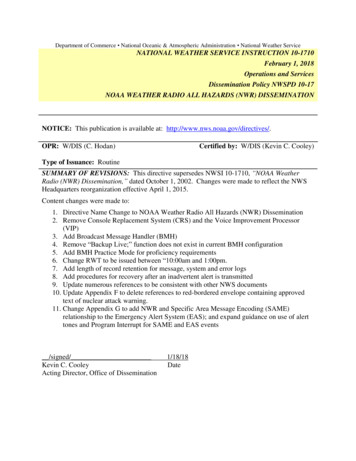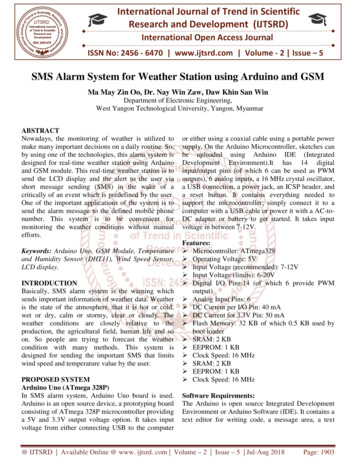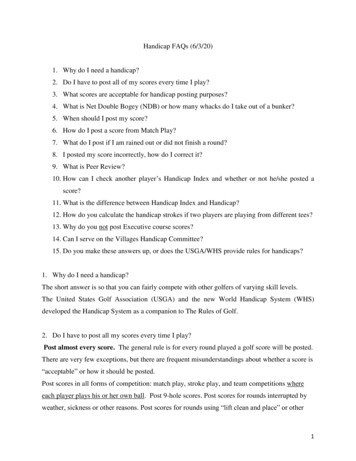
Transcription
Handicap FAQs (6/3/20)1. Why do I need a handicap?2. Do I have to post all of my scores every time I play?3. What scores are acceptable for handicap posting purposes?4. What is Net Double Bogey (NDB) or how many whacks do I take out of a bunker?5. When should I post my score?6. How do I post a score from Match Play?7. What do I post if I am rained out or did not finish a round?8. I posted my score incorrectly, how do I correct it?9. What is Peer Review?10. How can I check another player’s Handicap Index and whether or not he/she posted ascore?11. What is the difference between Handicap Index and Handicap?12. How do you calculate the handicap strokes if two players are playing from different tees?13. Why do you not post Executive course scores?14. Can I serve on the Villages Handicap Committee?15. Do you make these answers up, or does the USGA/WHS provide rules for handicaps?1. Why do I need a handicap?The short answer is so that you can fairly compete with other golfers of varying skill levels.The United States Golf Association (USGA) and the new World Handicap System (WHS)developed the Handicap System as a companion to The Rules of Golf.2. Do I have to post all my scores every time I play?Post almost every score. The general rule is for every round played a golf score will be posted.There are very few exceptions, but there are frequent misunderstandings about whether a score is“acceptable” or how it should be posted.Post scores in all forms of competition: match play, stroke play, and team competitions whereeach player plays his or her own ball. Post 9-hole scores. Post scores for rounds interrupted byweather, sickness or other reasons. Post scores for rounds using “lift clean and place” or other1
preferred lies. Post scores if you are disqualified for any reason (perhaps not signing a scorecard) but you had a score.Scores not posted: These are the few exceptions to the general rule:Do not post scores in scramble events or in alternate shot events because individualscores cannot be determined.Do not post scores on executive courses or unrated courses.Do not post scores in events that do not allow 14 clubs (for example, irons onlycompetitions.)Do not post scores when you play by yourself.3. What scores are acceptable for handicap posting purposes?Almost all scores are acceptable because of the basic premises of the USGA Handicap System states that every player will try to make the best score at each hole in every round, regardless ofwhere the round is played, and that the player will post every acceptable round for peer review.Therefore, all of the following are acceptable scores: When at least seven holes are played (7-13 holes are posted as a 9-hole score; 14 or moreare posted as an 18-hole score) Scores on all courses with a valid Course Rating and Slope Rating Scores in all forms of competition: match play, stroke play, and team competitions whereeach player plays his/her own ball Scores made under The Rules of Golf Scores played under the local rule of “preferred lies” Scores made in an area observing an active season4. What is Net Double Bogey (NDB) or how many whacks do I take out of a bunker? (This termreplaces the old Equitable Stroke Control (ESC) term.)You’ve played well. But on no. 5 you got into a bunker and help you can’t get out. You pick upafter you have had all the fun you can stand. What score do you post?NDB is an adjustment of individual hole scores (for handicap purposes) in order to make handicapsmore representative of a player's potential ability. NDB is applied after the round and is only usedwhen the actual score or the most likely score exceeds a player’s maximum number. NDB sets a2
limit to the number of strokes a player can take on a hole for handicap reporting purposes. NDB iseasy to calculate. If par is 4 then double bogey would be 6 and then add any handicap strokes youare entitled to for that hole. If you do not get a handicap stoke for that hole, your posting scorewould be just double bogey, a 6 in this example. However, if your course handicap is 22 and youreceive 2 strokes on the difficult par four 8th hole, your maximum reporting score would be 8(4 2 2).In summary, after you finish your round, adjust any score on a hole down to the maximum youcan take. Then total your adjusted score, and post.Most people assume it is the maximum number of strokes based on their handicap index. But fora person with a 9 handicap index, he or she may actually be a 4 handicap considering the coursehandicap based on which tees are played. So be fair to yourself, figure out your handicap for theround, and take the NDB for your level. How do you determine your course handicap? Here inThe Villages it is easy. You can just check the computer in the club house for your ID and lookat the adjusted handicap for the tees that you are playing that day, or you can use the GHIN appon your phone.5. When should I post my score?As soon as your round has been completed!!!! This is a new requirement under theUSGA/WHS. You must post all acceptable scores on the day played because your HandicapIndex will be calculated after each day of play. It is the responsibility of each player to post hisor her score immediately after play.6. How do I post a score from Match Play for a hole I picked up on?In competitions (such as match play or four ball) when a hole is not completed because the hole isconceded or you pick up after your partner takes the hole, record your score as the most likelyscore you would probably receive. The most likely score is equal to the number of strokes youhave taken plus the number you believe you would normally take to complete the hole. Put anotherway, in the player's best and honest judgment, it is the number of strokes needed to complete thehole from that point more than half the time.The most likely score should have an "X" preceding the number on the scorecard.3
For example, on a Par 4 hole, player A is just off the green in three strokes, and player A’s partnerjust holed out for a three; therefore, player A decides to pick up. Player A determines the mostlikely score would have been to chip on and two putt; therefore, player A will record an X-6 onthe scorecard (three strokes already taken plus three more strokes to complete the hole). Player Adoes not automatically put down the NDB maximum. First, player A determines the most likelyscore and then after the round checks to see if the most likely score is above the NDB limit. In thiscase, player A has a Course Handicap of 24 and does get a handicap stroke on this hole.Recording X-6 is not above the Net Double Bogey limit and therefore, X-6 is the score that mustbe posted for handicap purposes.7. What do I post if I am rained out or did not finish a round?If 7 to 13 holes are completed, post a 9-hole score. If 14 or more holes are completed, post an 18hole score. For holes that are not completed, post par plus any handicap strokes to which the playeris entitled.For the holes not played or holes not played in accordance with The Rules of Golf, for handicappurposes, the player must record a score of par plus any handicap strokes normally received. Thesescores should have an “X” preceding the number. For example, player A is not able to play holes16, 17, and 18 due to darkness. Player A has a Course Handicap of 12 and holes 16, 17, 18 area par 5, 3, 4, and are allocated as the number 4, 16, 10 handicap holes, respectively. Therefore,player A will record an x-6, x-3, x-5 on holes 16, 17, and 18, respectively. That is, Player A wouldhave a stroke on holes 16 and 18, but not 17. Holes 16 and 18 are recorded as Bogeys, and Hole17 as Par.8.I posted my score incorrectly, how do I correct it?The staff at any of the Championship courses can assist you with correcting an incorrect score.The correction should be done immediately because your handicap index is updated daily underthe new USGA/WHS.9. What is Peer Review?4
Peer Review is the ability of golfers to gain an understanding of a player's potential ability and toform a reasonable basis for supporting or disputing a score that has been posted. There are twoessential elements of peer review:1. Members of a golf club must have a reasonable and regular opportunity to playtogether; and2.Access must be provided to scoring records, as well as to a Handicap Index, forinspection by others, including, but not limited to, fellow club members. There are twoforms of scoring record display: AND THEY ARE WHAT?In simple terms, peer review is a check and balance between players to ensure that all scores arebeing posted, and the scores being posted are accurate.The USGA, in an article, wrote:Golf is a game of honor. Players are expected to call penalties on themselves. The othercompetitors in a tournament "protect the field" by monitoring each other in a group and, at theend, placing an attesting signature on a scorecard. In that vein, "peer review" is the method bywhich players attest to the ability of those in a club, through monitoring playing and postingof scores.The game's code of honor means that even a hint of cheating or dishonesty can tarnish anindividual. Every golfer has experienced the uncomfortable moment of asking, or being asked,whether a ruling was administered properly or the right score was reported for a hole. But weare less frequently questioned on whether a round was posted correctly for handicap purposes,or posted at all. Such serious infractions cannot be ignored, lest they challenge the sense ofhonor as it applies to handicapping.Peer review keeps the handicap system fair.10. At each pro shop, there are two terminals available for posting your score. On those terminals,you can also look up anyone’s handicap index, and see the last twenty scores posted. Using theinternet, you can access the GHIN directly, or go to the web page for the Villages.net and click onthe GHIN link. Click on the Handicap Lookup and enter state and player’s name.5
11. What is the difference between Handicap Index and Course Handicap?The Handicap Index indicates a player’s potential ability on a course of standard playing difficulty.The Handicap Index is calculated when you post your scores to the GHIN system.A Course Handicap represents the number of strokes needed to play to the level of a scratchgolfer - or to PAR of a particular set of tees at a given course. A Course Handicap is expressed asa whole number (e.g. 12).Course Handicap Current Handicap Index [Your Index] x (Slope rating for the tees you areplaying [107]/113) (Course Rating for the course you are playing [65.3] – PAR for that course[72])Example using Mallory Hills Amelia/Caroline White Tees: 22.4 Handicap Index x (Slope Rating107/113) (Course Rating 65.3 – 72 Par for the course) 15 Course Handicap12. How do you calculate the handicap strokes if two players are playing from different tees?You can just check the computer in the club house for your ID and the other player’s ID and lookat the adjusted handicap for the tees that you are playing that day, or you can use the GHIN appon your phone.13. Why do you not post Executive course scores?Executive courses do not have USGA course rating or slope determination.14. Can I serve on the Villages Handicap Committee?Yes. The Handicap Committee is comprised of residents in the Villages who volunteer their time.The committee member is appointed as the men’s or ladies’ representative for each of theChampionship courses. Each member serves typically for three years. Contact any member ofthe handicap committee if you are interested in serving.15. Do you make these answers up, or does the USGA/WHS provide rules for handicaps?The responses to these FAQs are from the new USGA/WHS Handicap System. Please let theVillages Handicap Committee know of any erroneous entry. In addition, responses involvingsituations here in the Villages have been sourced from GolfTheVillages.com. Again, pleaseinform the Committee of any errors or misquotes.6
The Handicap Index is calculated when you post your scores to the GHIN system. A Course Handicap represents the number of strokes needed to play to the level of a scratch golfer - or to PAR of a particular set of tees at a given course. A Course Handicap is expressed as
